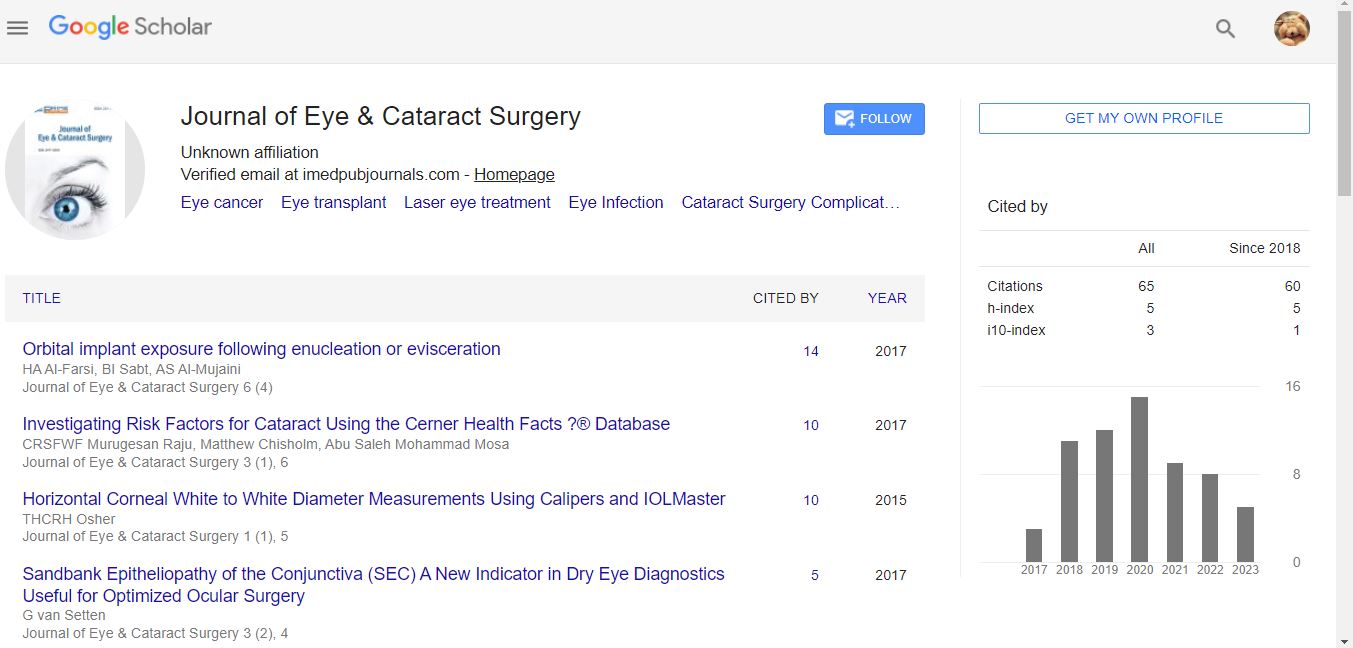Short Communication - (2024) Volume 10, Issue 3
Understanding Bilateral Conditions: Implications, Diagnosis, and Treatment Across Various Medical Fields
Tessa Wilkins*
Department of Medicine, University of Global Health, USA
*Correspondence:
Tessa Wilkins,
Department of Medicine, University of Global Health,
USA,
Email:
Received: 02-Sep-2024, Manuscript No. IPJECS-24-21681;
Editor assigned: 04-Sep-2024, Pre QC No. IPJECS-24-21681 (PQ);
Reviewed: 18-Sep-2024, QC No. IPJECS-24-21681;
Revised: 23-Sep-2024, Manuscript No. IPJECS-24-21681 (R);
Published:
30-Sep-2024, DOI: 10.36648/2471-8300.10.3.21
Introduction
Bilateral conditions refer to medical issues that affect both
sides of the body or both organs within a paired structure, such
as the eyes, ears, lungs, or kidneys. This term encompasses
a wide array of health concerns, ranging from anatomical
abnormalities to pathological processes that can significantly
impact an individual’s quality of life. Understanding bilateral
conditions is essential for healthcare professionals, as it aids in
diagnosis, treatment planning, and patient education. Bilateral
conditions can manifest in various forms. For instance, bilateral
knee osteoarthritis is a common degenerative joint disease that
occurs when the cartilage cushioning the knee joints wears down
on both sides. Bilateral hearing loss is yet another significant
concern, impacting communication and social interaction.
It can be caused by a variety of factors, including age-related
degeneration, noise exposure, or genetic predispositions [1,2].
Description
Patients may exhibit difficulty in distinguishing sounds or
understanding speech, especially in noisy environments.
Audiologists typically assess the degree of hearing loss through
comprehensive testing, recommending hearing aids or other
assistive devices to enhance auditory function. In certain cases,
bilateral conditions can indicate systemic issues. For example,
bilateral oedema, characterized by swelling in both legs and other
symmetrical body areas, may signal underlying cardiovascular,
renal, or hepatic problems. Clinicians must conduct thorough
evaluations, including laboratory tests and imaging studies,
to identify the root cause. Treatment approaches may vary
widely, from managing heart failure with diuretics to addressing
kidney dysfunction. Psychiatric conditions can also present
bilaterally, particularly in the context of mood disorders. Major
depressive disorder may manifest with symptoms affecting both
psychological and physical health. This condition often requires
a comprehensive treatment plan, including psychotherapy,
medication, and lifestyle changes. Recognizing the bilateral
impact of such disorders is crucial for effective management and
recovery. The evaluation of bilateral conditions often requires a
careful and methodical approach. Diagnostic imaging, laboratory
tests, and specialist consultations are frequently employed to
ascertain the nature and extent of the issue. Effective treatment
of bilateral conditions requires a multidisciplinary approach,
often involving various specialists. For instance, a patient with
bilateral knee osteoarthritis may work with an orthopaedic
surgeon, physical therapist, and nutritionist to achieve optimal
outcomes. Similarly, a patient experiencing bilateral vision
issues might engage with an ophthalmologist and optometrist to
explore surgical options and corrective lenses. Education plays a
pivotal role in managing bilateral conditions [3,4].
Conclusion
Healthcare providers must ensure that patients understand their
condition, treatment options, and the importance of follow-up
care. Empowering patients with knowledge enables them to take
an active role in their health, promoting adherence to treatment
plans and fostering better outcomes. In summary, bilateral
conditions encompass a wide range of health issues that affect
both sides of the body or paired organs. From joint disorders
and visual impairments to systemic diseases and psychological
concerns, understanding the implications and treatment
options is crucial for healthcare providers. A collaborative,
multidisciplinary approach to diagnosis and management is
essential for optimizing patient outcomes and improving quality
of life. As research continues to advance in various medical
fields, the understanding and treatment of bilateral conditions
will evolve, offering new hope and improved care for patients
worldwide.
Acknowledgement
None.
Conflict Of Interest
None.
References
- Toh CJL, Liu C, Lee IXY, Lin MTY, Tong L, et al. (2023) Clinical associations of corneal neuromas with ocular surface diseases. Neural Regen Res. 19(1):140-147.
[Crossref] [Google Scholar] [PubMed]
- Cao B, Vu CHV, Keenan JD (2023) Telemedicine for cornea and external disease: A scoping review of imaging devices. Ophthalmol Ther. 12(5):2281-2293.
[Crossref] [Google Scholar] [PubMed]
- Sheppard J, Lee BS, Periman LM (2023) Dry eye disease: Identification and therapeutic strategies for primary care clinicians and clinical specialists. Ann Med. 55(1):241-252.
[Crossref] [Google Scholar] [PubMed]
- Zheng Y, Baidya A, Annabi N (2023) Molecular design of an ultra-strong tissue adhesive hydrogel with tunable multifunctionality. Bioact Mater. 29:214-229.
[Crossref] [Google Scholar] [PubMed]
Citation: Wilkins T (2024) Understanding Bilateral Conditions: Implications, Diagnosis, and Treatment across Various Medical
Fields. J Eye Cataract Surg. 10:21.
Copyright: © 2024 Wilkins T. This is an open-access article distributed under the terms of the Creative Commons Attribution
License, which permits unrestricted use, distribution, and reproduction in any medium, provided the original author and source
are credited.

